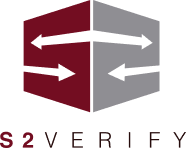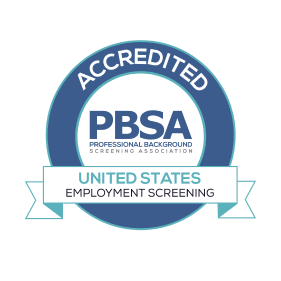The Compliance Considerations You Need to Know in Continuous Monitoring
Continuous monitoring is transforming how HR and compliance leaders manage workforce risk. Rather than relying solely on pre-employment background checks, ongoing screening enables companies to be proactive about employee risk, especially in sensitive roles or industries with regulations. But, as with any strategy that involves employee data and oversight, legal compliance and ethical responsibility are paramount.
Understanding the legal framework and operational implications of continuous monitoring is crucial for HR leaders, compliance officers, and talent strategists to protect the organization and its employees.
What is Continuous Monitoring?
Continuous monitoring refers to conducting routine background checks on current employees to identify new criminal records, changes in licensure status, or updates to driving history, among other data points.
These updates can help HR professionals quickly identify potential business, customers, and workforce risks, without waiting for a recheck every few years or relying on employees to self-disclose incidents.
While healthcare, financial services, education, and transportation industries have long adopted periodic rescreening due to regulatory requirements, real-time data availability has enabled broader adoption across sectors.
The Legal Framework: What You Must Understand
The legality of continuous monitoring hinges on several key compliance pillars. Here’s what HR leaders must address before implementing or expanding a program:
- FCRA Authorization and Disclosure Requirements: Under the Fair Credit Reporting Act (FCRA), employers must obtain written consent before conducting any background check, including post-hire checks. If you intend to monitor employees continuously, your authorization forms must clearly state that background checks may be conducted periodically during the employee’s term of employment.
Consent must be clear, conspicuous, and presented as a standalone document, not buried in other HR paperwork. Some employers update these disclosures during onboarding or policy updates to ensure coverage.
- Adverse Action Compliance: Should continuous monitoring uncover new information that may lead to discipline, reassignment, or termination, employers must follow the adverse action process under the FCRA. This includes providing the employee with a pre-adverse action notice, a copy of the background report, and a summary of their rights before making any final decisions. Final action can be taken only after a reasonable period (typically five business days).
Failing to follow this protocol could expose the organization to legal liability, particularly if an employee claims they were denied the opportunity to dispute or explain the findings.
- State and Local’ Ban the Box’ and Fair Chance Laws: Even when operating within federal guidelines, continuous monitoring must also consider local fair hiring laws. Several jurisdictions restrict the use and disclosure of criminal history in employment decisions. For example, some laws prohibit considering arrests that did not lead to convictions or limit how far back employers can review criminal records.
When implementing continuous monitoring, work with legal counsel to assess how local regulations may limit the information that can be reviewed or used in employment decisions.
Consent is Not One-and-Done
One of the most common compliance missteps is assuming that a single pre-hire disclosure authorizes indefinite monitoring. While some courts have upheld broad consent forms, the best practice— and often a legal requirement —is to make it an ongoing process.
Workforce transparency should be prioritized. Communicating the reasons for continuous checks—such as safety, regulatory obligations, or fiduciary responsibility—builds trust and mitigates resistance. Employers who demonstrate how they protect employee data and apply findings fairly are likelier to maintain workforce support.
When Continuous Monitoring is a Must-Have
While not every role requires continuous monitoring, certain job types and industries practically demand it:
- Healthcare: Licensure status, sanctions, and criminal charges can change quickly and affect patient safety.
- Transportation and Logistics: Real-time driving records and DOT compliance monitoring reduce liability and keep operations compliant.
- Financial Services: Roles accessing sensitive financial data benefit from ongoing fraud or criminal activity screening.
- Child and Elder Care: To protect vulnerable populations, any new abuse charges or registry entries must be flagged immediately.
In these and other regulated environments, continuous monitoring isn’t just a safety net—it’s a core part of operational compliance.
HR’s Balancing Act: Risk, Fairness, and Culture
One key challenge in continuous monitoring is managing the tension between organizational safety and employee privacy. A reactive approach to new information can unintentionally lead to discrimination claims or morale issues.
To navigate this, HR leaders should define and document criteria for what types of findings will trigger a review and what steps will follow. A documented adjudication matrix, aligned with job responsibilities and legal thresholds, supports consistent decision-making and protects against claims of unfair treatment.
One Framework to Guide Monitoring Programs:
- Documented Consent: Renewed annually or with policy changes
- Clear Policies: Communicated to staff in plain language
- Defined Triggers: Specify which findings prompt HR review
- Consistent Adjudication: Use standardized criteria for decisions
- Appeal Process: Allow employees to explain or contest findings
HR teams that anchor monitoring programs in transparency, consistency, and legal fidelity are best positioned to earn buy-in from leadership and staff alike.
Where Technology and Compliance Converge
Modern background screening partners, like S2Verify, offer platforms with built-in legal safeguards, automated alerts, and configurable workflows that make continuous monitoring both effective and compliant. Tools such as real-time criminal checks, professional license monitoring, and I-9 re-verification workflows help ensure your compliance programs evolve alongside changing laws and employee data.
Platforms that integrate with your HRIS or ATS can also deliver visibility across multiple roles, departments, and locations, minimizing manual work while ensuring nothing slips through the cracks.
With our solutions, HR professionals can access on-demand reports, flag compliance issues before they escalate, and take confident, defensible actions rooted in current data—all while maintaining a fair hiring culture.
A Smarter Path Forward
Continuous monitoring isn’t just a compliance measure—it’s a proactive, data-driven approach to safeguarding your workforce, brand, and stakeholders. However, it requires intentional design, legal rigor, and the right technology partner to get it right.
Whether overseeing safety-sensitive roles, managing regulatory scrutiny, or building a culture of accountability, ongoing screening gives you an edge. When done thoughtfully and compliantly, it can be a powerful lever for building trust and reducing risk.
For HR and talent leaders, this isn’t about surveillance—it’s about stewardship. With the right policies, processes, and partners in place, continuous monitoring becomes less of a challenge and more of a strategic asset
Always refer to FCRA regulations and consult with legal experts specializing in employment law when embarking on something new.







